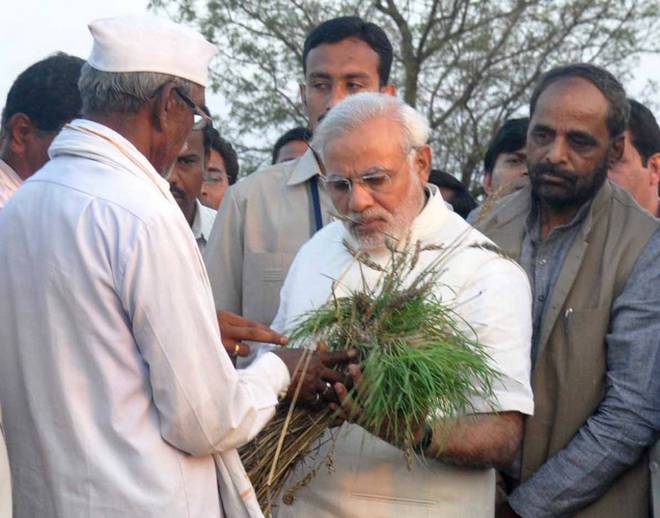Modi government is planning to announce many schemes for formers which could cost the treasury around 60 thousand crores. The government plan includes free crop insurance and alteration of credit schemes. The meeting held among the ministers, Prime Minister Narendra Modi, Finance Minister Arun Jaitley, Agriculture Minister Radha Mohan Singh, senior bureaucrats, and CEA Krishnamurthy Subramanian discussed an income support scheme for farmers on lines of “Rythu Bandhu” scheme of Telangana government. The central government scheme is expected to benefit 9-11 crore small and marginal farmers and would cost around 60 thousand crores to the exchequer. The scheme could be announced in the winter session or the parliament within two to three weeks or in interim budget on February 1.
Under ‘Rythu Bandhu’ scheme Telangana government provides Rs. 4,000 rupees per acre to all eligible farmers for kharif and rabi season for input purchase like seeds, fertilisers, pesticides, and labor as investment support. Around 60 lakh farmers in the state benefitted from the scheme with exchequer cost around 12 thousand crore which is 8 percent of the budgetary expenditure of Telangana. A few criticisms of the scheme is that it will not benefit tenant farmers and laborers and will not support the post-production problem of farmers. Odisha and Jharkhand have also announced their own input price incentive scheme on a per-acre and per-family basis for farmers.
The government will also make insurance under Pradhan Mantri Fasal Bima Yojana (PMFBY) free for farmers. Currently, farmers are charged at the rate of 2 percent for Kharif crops, 1.5 percent for Rabi crops and 5 percent for commercial and horticulture crops. The government will make the state share some financial burden “The finance ministry is working on permutations and combinations as to whether the expenditure (Rs 600-700 billion) would be shared in the ratio of 70:30 between the Central government and states, or 60:40 or 50:50 as is the case with various existing programmes,” said an official.
In a farmer rally in Uttar Pradesh, PM Modi announced that government targets to double farmer’s income by 2022. The Centre formed an 8 member inter-ministerial committee under Ashok Dalwai, Additional secretary at the Union Agriculture Ministry to suggest steps to double farmer’s income. After the formation of the committee, the government took various steps on its suggestions to solve farmer’s distress. In June 2016, Pradhan Mantri fasal Bima Yojna (PMFBY) was rolled out to insure crops. The insurance scheme made farming as secure as any other profession. If crop suffers due to any reason like drought, excessive rain etcetera, insurers will pay the output price. To provide irrigation facilities to farmers across the country, PM Modi launched Pradhan Mantri Krishi Sinchai Yojana (PMKSY) and pumped money into the National Bank for Agriculture and Rural Development (NABARD) to increase credit penetration to farmers. The steps taken by the government coupled with good monsoon proved beneficial for agriculture and the sector grew at 6.3 percent in 2016-17. However, growth moderated to 3 percent in 2017-18 due to the high base effect. In the first quarter of this financial year, agricultural growth was 5.3 percent compared to 3 percent in the same period of last year.
The government is trying to solve the post-production problem through incentivizing exports. As India produces more than it consumes, the price of agriculture produces crashes and this could not be solved without encouraging exports. The Government plans to introduce country-specific special agricultural produce zones to boost agricultural exports. The exports are already rising, in the FY 2018, the country exported agricultural commodities worth $ 38.74 billion, as against imports of $ 24.89 billion which resulted in a farm trade surplus of $ 13.85 billion. The surplus for 2016-17 and 2015-16 was $ 8.05 billion and $ 10.23 billion respectively.
